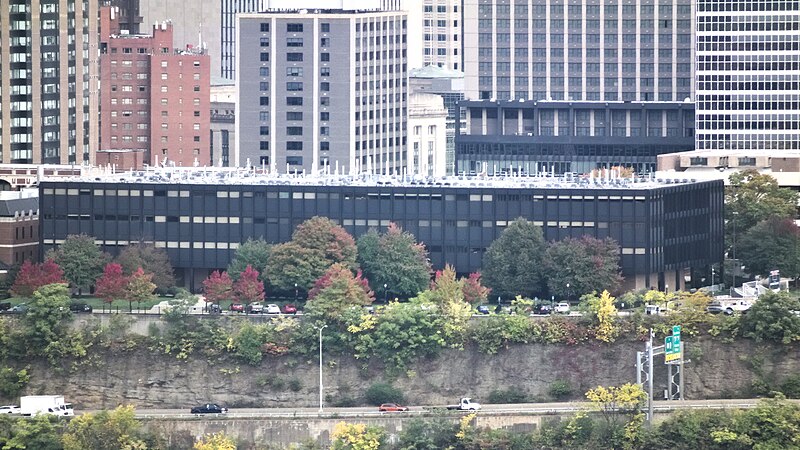
The Richard King Mellon Hall of Science was designed by Ludwig Mies van der Rohe, and is therefore a black box on stilts. Old Pa Pitt sometimes makes fun of Mies’ black boxes on stilts, but he means it good-naturedly. The colonnades of stilts have a job, and they do it well. They humanize some inhumanly large buildings by creating a human-sized interface between building and street. They also create an expansive outdoor space that is out of the rain and snow, but still open to the world. Here we see a good use of that space, with tables being set up for graduation festivities.








